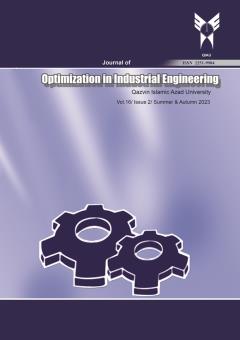Short-Term Tuberculosis Incidence Rate Prediction for Europe using Machine learning Algorithms
Subject Areas : Design of Experiment
Jamilu Yahaya Maipan-uku
1
![]() ,
Nadire Cavus
2
,
Nadire Cavus
2
![]() ,
Boran Sekeroglu
3
,
Boran Sekeroglu
3
![]()
1 -
2 -
3 -
Keywords: Machine Learning, Random forest, ANN, Europe, Decision tree, Tuberculosis Incidence Rates,
Abstract :
Tuberculosis (TB) remains a significant public health concern in Europe, necessitating effective disease management and resource allocation. Predicting short-term TB incidence rates using machine learning algorithms offers a data-driven approach to aid policymakers and healthcare professionals in making informed decisions. Machine learning (ML) algorithms are essential for prediction tasks due to their ability to establish a relationship for data sequences. In this study, three machine learning algorithms, namely, Decision Tree (DT), Random Forest (RF), and Artificial Neural Network (ANN), are implemented to predict the tuberculosis incidence rates and to compare the efficacy of ML algorithms for tuberculosis incidence rates prediction for 2025, among Europe. Even though all models achieved considerable results, DT obtained superior prediction rates for the future TB incidence rate with MSE, MAE, and R2 of 0.000555, 0.01506, and 0.96430 while RF 0.000882, 0.01781, and 0.94329, and ANN 0.000767, 0.02315, and 0.95066. The prediction results showed that a significant decrease in TB incidence rates is expected for 2025 form 49,752 in 2019 to 38,509 in 2025, except Finland and Malta.
Abdualgalil, B., Abraham, S., Ismael, W. M., & George, D. (2022, January). Modeling and Forecasting Tuberculosis Cases Using Machine Learning and Deep Learning Approaches: A Comparative Study. In International Conference on Data Management, Analytics & Innovation (pp. 157-171). Singapore: Springer Nature Singapore.
Ali, M. H., Khan, D. M., Jamal, K., Ahmad, Z., Manzoor, S., & Khan, Z. (2021). Prediction of multidrug-resistant tuberculosis using machine learning algorithms in swat, Pakistan. Journal of healthcare engineering. 2567080 (2021). https://doi.org/10.1155/2021/2567080
Ali, M. H., Khan, D. M., Jamal, K., Ahmad, Z., Manzoor, S., & Khan, Z. (2021). Prediction of multidrug-resistant tuberculosis using machine learning algorithms in swat, Pakistan. Journal of healthcare engineering.
Asad, M., Mahmood, A., & Usman, M. (2020). A machine learning-based framework for Predicting Treatment Failure in tuberculosis: A case study of six countries. Tuberculosis, 123, 101944. https://doi.org/10.1016/j.tube.2020.101944.
Botchkarev, A. (2019). A new typology design of performance metrics to measure errors in machine learning regression algorithms. Interdisciplinary Journal of Information, Knowledge, and Management, 14, 045-076. doi:10.28945/4184.
Cavus, N., Mohammed, Y. B., & Yakubu, M. N. (2021). Determinants of learning management systems during COVID-19 pandemic for sustainable education. Sustainability, 13(9), 5189. https://doi.org/10.3390/su13095189.
ECDC, 2019. Surveillance Atlas of Infectious Diseases. https://atlas.ecdc.europa.eu/public/index.aspx?Dataset=27&HealthTopic=54, last accessed 2022/01/10.
Hussain, S. A., Cavus, N., & Sekeroglu, B. (2021). Hybrid machine learning model for body fat percentage prediction based on support vector regression and emotional artificial neural networks. Applied Sciences, 11(21), 9797. https://doi.org/10.3390/app11219797.
Jamal, S., Khubaib, M., Gangwar, R., Grover, S., Grover, A., & Hasnain, S. E. (2020). Artificial Intelligence and Machine learning based prediction of resistant and susceptible mutations in Mycobacterium tuberculosis. Scientific reports, 10(1), 5487. https://doi.org/10.1038/s41598-020-62368-2
Kouchaki, S., Yang, Y., Walker, T. M., Sarah Walker, A., Wilson, D. J., Peto, T. E., ... & Clifton, D. A. (2019). Application of machine learning techniques to tuberculosis drug resistance analysis. Bioinformatics, 35(13), 2276-2282. doi:10.1093/bioinformatics/bty949.
Kuhn, M., Johnson, K. (2018). Applied Predictive Modeling. Springer, Heidelberg. 2nd edn,
Lai, N. H., Shen, W. C., Lee, C. N., Chang, J. C., Hsu, M. C., Kuo, L. N., ... & Chen, H. Y. (2020). Comparison of the predictive outcomes for anti-tuberculosis drug-induced hepatotoxicity by different machine learning techniques. Computer Methods and Programs in Biomedicine, 188, 105307. https://doi.org/10.1016/j.cmpb.2019.105307.
Lewis, A., Mahmoodi, E., Zhou, Y., Coffee, M., & Sizikova, E. (2021). Improving tuberculosis (TB) prediction using synthetically generated computed tomography (CT) images. In Proceedings of the IEEE/CVF international conference on computer vision (pp. 3265-3273).
Mohidem, N. A., Osman, M., Muharam, F. M., Elias, S. M., Shaharudin, R., & Hashim, Z. (2021). Prediction of tuberculosis cases based on sociodemographic and environmental factors in gombak, Selangor, Malaysia: A comparative assessment of multiple linear regression and artificial neural network models. International Journal of Mycobacteriology. https://www.ijmyco.org/text.asp?2021/10/4/442/332352.
Rashidi, H. H., Dang, L. T., Albahra, S., Ravindran, R., & Khan, I. H. (2021). Automated machine learning for endemic active tuberculosis prediction from multiplex serological data. Scientific Reports, 11(1), 17900. https://doi.org/10.1038/s41598-021-97453-7.
Şekeroğlu, B., & Emirzade, E. (2018, July). A computer aided diagnosis system for lung cancer detection using support vector machine. In Third international workshop on pattern recognition (Vol. 10828, pp. 143-150). SPIE. https://doi.org/10.1117/12.2502010.
Sekeroglu, B., Hasan, S. S., & Abdullah, S. M. (2020). Comparison of machine learning algorithms for classification problems. In Advances in Computer Vision: Proceedings of the 2019 Computer Vision Conference (CVC), Volume 2 1 (pp. 491-499). Springer International Publishing. https://doi.org/10.1007/978-3-030-17798-0_39.
Tang, N., Yuan, M., Chen, Z., Ma, J., Sun, R., Yang, Y., He, Q., Guo, X., Hu, S., & Zhou, J. (2023). Machine Learning Prediction Model of Tuberculosis Incidence Based on Meteorological Factors and Air Pollutants. International journal of environmental research and public health, 20(5), 3910. https://doi.org/10.3390/ijerph20053910.
Tiwari, Akshita and Maji, Srabanti, Machine Learning Techniques for Tuberculosis Prediction (March 14, 2019). International Conference on Advances in Engineering Science Management & Technology (ICAESMT) - 2019, Uttaranchal University, Dehradun, India, Available at SSRN: https://ssrn.com/abstract=3404486 or http://dx.doi.org/10.2139/ssrn.3404486
van den Elsen, S. H., Sturkenboom, M. G., Akkerman, O. W., Manika, K., Kioumis, I. P., van der Werf, T. S., ... & Alffenaar, J. W. C. (2019). Limited sampling strategies using linear regression and the Bayesian approach for therapeutic drug monitoring of moxifloxacin in tuberculosis patients. Antimicrobial Agents and Chemotherapy, 63(7), 10-1128. https://doi.org/10.1128/AAC.00384-19.
World Health Organization: Global tuberculosis report 2015. 20th edn. World Health Organization (2015). https://apps.who.int/iris/handle/10665/191102
World Health Organization: Global tuberculosis report 2021 (2021).
World Health Organization: WHO Report on the global tobacco epidemic: Addressing new and emerging products (2021).
Zheng, Y., Zhang, X., Wang, X., Wang, K., & Cui, Y. (2021). Predictive study of tuberculosis incidence by time series method and Elman neural network in Kashgar, China. BMJ open, 11(1), e041040.


